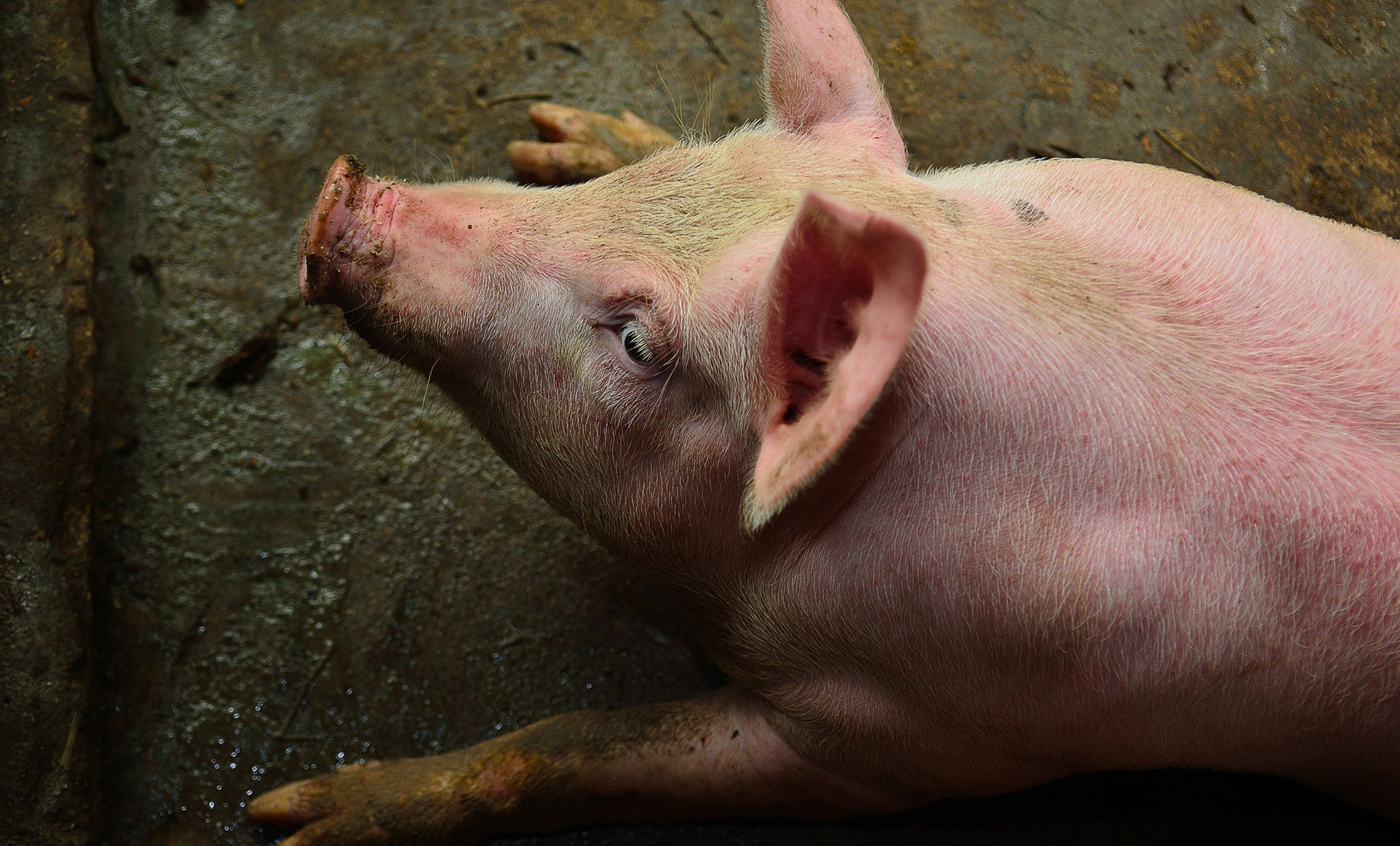Agárrate fuerte al estómago para esta publicación.
Chuletas de cerdo, salchichas, costillas, pepperoni, tocino, jamón... todas son carnes muy apreciadas en Estados Unidos. Y, según el Departamento de Agricultura de Estados Unidos y la Organización Mundial de la Salud, todas provienen de animales criados en condiciones patológicas.
El Departamento de Agricultura de Estados Unidos (USDA) y la OMS informan que la industria porcina estadounidense cultiva animales enfermos , empezando por las plantas de sacrificio sucias. Una infracción habitual es el control de plagas en la sala de sacrificio. Una planta de sacrificio típica inspecciona visualmente 19.000 cerdos al día en busca de parásitos, inflamación, hinchazón y masas, todos ellos indicadores importantes de enfermedad. Pero los inspectores permiten rutinariamente la venta de cerdos enfermos y se olvidan de etiquetar las partes de cerdo contaminadas.
Todo esto te pone en riesgo. Pero no son solo las enfermedades las que te deben preocupar... sino también las sustancias tóxicas que se utilizan para prevenir enfermedades en los cerdos.
Hoy en día, los cerdos se crían en condiciones antinaturales y se les inyectan innumerables medicamentos, muchos de los cuales son peligrosos para la salud humana. Entre los medicamentos específicos se incluyen antibióticos, antiparasitarios, medicamentos contra hongos, vacunas, metales pesados y aditivos en los piensos.
Una historia poco saludable de la carne de cerdo
Los cerdos han sido durante mucho tiempo sinónimo de suciedad porque comen... bueno... suciedad. Durante la era de Shakespeare, eran famosos por alimentarse de carne humana de prisioneros ejecutados que habían quedado sin enterrar en las calles. Es por eso que las culturas han evitado el uso de productos porcinos durante milenios.
Los cerdos también son biológicamente similares a los humanos. Los mismos patógenos que afectan a los cerdos nos afectan a nosotros, específicamente la triquinosis y la hepatitis E. La triquinosis es causada por comer carne de cerdo cruda y poco cocida infectada con Trichinella spiralis, un gusano parásito. Después de que los humanos ingieren carne de cerdo infectada con T. Spiralis, las larvas escapan a los intestinos del nuevo huésped. La hepatitis E es muy común porque se transmite fácilmente por contacto y también es causada por la ingestión de carne de cerdo poco cocida.

¿Existe una forma segura de comer carne de cerdo?
La Fundación Weston A. Price realizó un análisis de sangre en vivo después de que los participantes consumieran cuatro tipos de carne de cerdo: cerdo de pastoreo cocido, cerdo marinado en vinagre de sidra de manzana, tocino de pastoreo sin curar y prosciutto de pastoreo sin curar. Se observó una rápida degradación en los dos últimos.
Después de consumir la carne de cerdo, a los sujetos se les permitió salir del laboratorio, se les indicó que no comieran nada más y regresaran cinco horas más tarde al laboratorio para un análisis de sangre posterior a la carne.
Resultados del análisis de sangre cinco horas después del consumo:
Carne de cerdo cocida sin marinar:
- muestra efectos negativos en la sangre
- sangre extremadamente coagulada
- Los glóbulos rojos se agrupan, haciendo que la sangre sea pegajosa.
- presencia de factores de coagulación
Cerdo cocido marinado:
- La sangre muestra una ligera pegajosidad o tendencia a agruparse.
- La sangre prácticamente no ha cambiado desde antes.
- La sangre parece normal y saludable.
El método de cocción más eficaz es marinar en vinagre de sidra de manzana, luego curar con sal y luego curar con humo. El curado con sal incluye sal de mesa, nitrato de sodio y, a veces, nitrato de sodio o potasio para hacer tocino y jamón. Las sales mejoran el sabor, previenen la rancidez de la carne y la intoxicación alimentaria. Este tratamiento ácido de la carne de cerdo también puede matar los parásitos.
Conclusión
Las investigaciones indican que conviene evitar por completo los productos derivados del cerdo. Pero si está decidido a comerlos, opte por el método científicamente comprobado de Weston A. Price. Curar la carne de cerdo con sales y adobos hace que sea segura para el consumo, ya que inactiva los parásitos y mata las bacterias que pueden causar intoxicación alimentaria.






